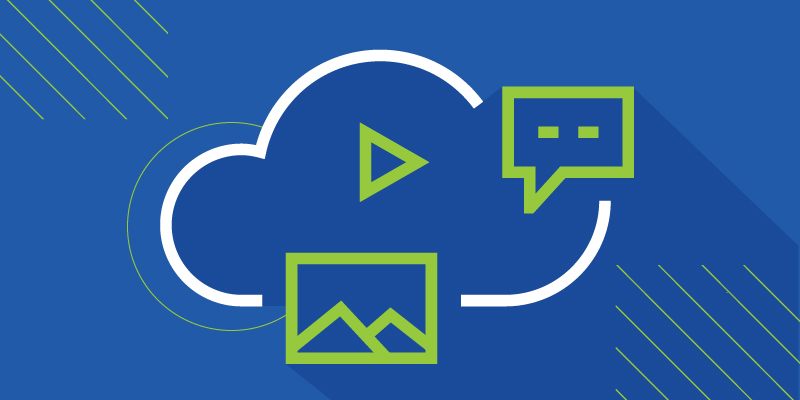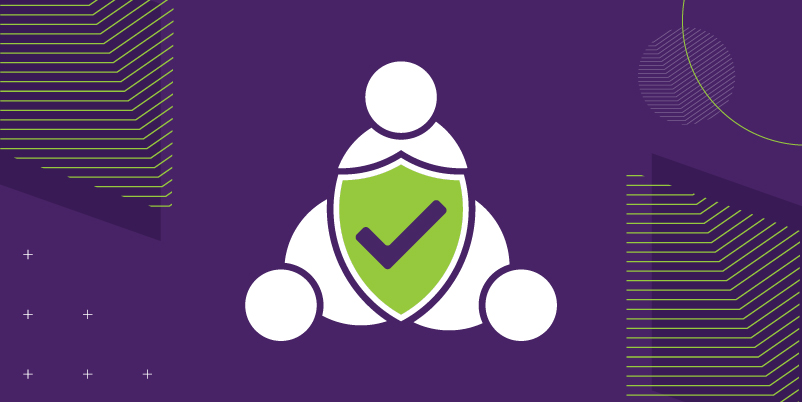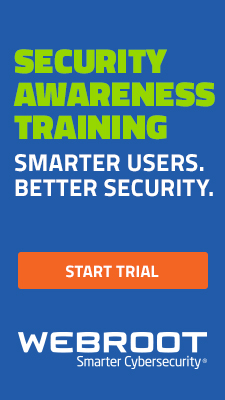
by Kyle Fiehler | Feb 3, 2021 | Threat Lab
We’ve been doing our homework, and two things seem to be true about cybersecurity awareness training simultaneously:
- It can be very effective at protecting businesses from one of the most common security threats they face (the majority, according to the Ponemon Institute). Namely, phishing.
- MSPs, often the single most reliable source of cybersecurity for small business, want to offer training as a part of their services but unwillingness on the part of their clients prevents them from doing so.
If you know, as we do, that one in three American workers admits to clicking on a phishing link in the past year, what’s the reason for such reluctance? Here are four we commonly encounter and how to overcome them.
The “higher-ups” don’t see the value of training
For (the lucky) companies who’ve yet to be hit by a significant cyberattack, security awareness training may not hold obvious value. After all, very few organizations have zero cybersecurity measures in place. “What’s my endpoint security for, anyway?” “Threats are stopped by my firewall.” So the thinking goes…
Even if they see the need for user training from cybersecurity standpoint, some small businesses aren’t sure it’s worth the effort. IT budgets are often strained as it is, and couldn’t those dollars be better spent on the latest high-tech trend in the cyber defense industry?
Well, the numbers don’t lie, as they say. And in survey after survey, anecdote after anecdote, the numbers tell the same story: training works. In our latest survey of more than 4,000 managed service providers, for instance, 59 percent reported more suspicious emails being reported to IT. Thirty-seven percent reported fewer security incidents in general. Our own internal data tells us that our customers who use security training see up to 90 percent less malware than those that use an antivirus alone.
Leadership expects a “set it and forget it” or “one size fits all” experience
Executives will also often back off security awareness training when they realize it’s not a one-time test or a certificate they hang on a wall in their office. It’s true that the most effective cybersecurity training programs are tailored to a specific business and delivered on an ongoing basis.
Ensuring that training is tailored to a business’s operations is one of the best ways to overcome our next objection—that training doesn’t accurately represent the threats facing employees. That means providing industry-relevant compliance training and providing riskier users more training than tech savvy ones. This doesn’t happen by itself.
Persistence is also key when it comes to user security training. Our data indicates that the average click-through rate for a phishing simulation campaign is 11 percent. That drops to eight percent in the second campaign, but by the eleventh it’s down to five percent. Commit to 20 campaigns and you can reduce that rate to two percent.
Training doesn’t mirror real-world threats
Cybersecurity “tests,” especially of tactics like phishing, are of dubious effectiveness. When an employee knows a test is being administered, his or her guard goes up in unnatural ways. Results are skewed by the subject merely knowing a test is underway. Additionally, as any former student knows, studying up on cybersecurity principles is no guarantee of long-term retention.
For training to be effective it needs to be topical and believable. A healthcare provider needs to be familiar with HIPPA compliance protocol, for instance, and be able to identify an email spoofing a large insurance provider.
Real-world training should also mirror real-world events. The COVID-19 pandemic prompted a rise in scams related to the virus, so users should be cautious of any communications that look like they could have been ripped from the day’s headlines. Training that can’t be tailored to this degree won’t be as effective.
Employees aren’t onboard
Several factors can negatively affect employees’ willingness to adopt training. Some may believe they know all there is to know about cybersecurity. Some may believe it’s hopelessly over their head. For some, it’s simply not in their job description and that’s enough to stop them from pursuing training.
Whatever the reason for reluctance, buy-in starts at the top. Executives and other leaders should make it clear to employees that they subject themselves to the same training as their employees. (And if the C level doesn’t believe it’s an attractive target, encourage them to read up on spear phishing or “whaling.)
Some training is also just poorly designed. Courses don’t have to be drawn-out, black-and-white, bubble-filling multiple-choice tests. Sometimes simple awareness-raising of current security threats is enough. There’s evidence to suggest that micro learning modules are more effective. Courses can be aesthetically pleasing and feature good UX. It’s key to getting employees to engage, in fact.
The right approach requires the right platform
Whatever the reason a client or employee has for being reluctant to adopt security awareness training, there’s a good chance it can be overcome with the right tool. Visit the Webroot® Security Awareness Training page to learn more and to see why the research firm Info-Tech had this to say about Webroot:
“Our SoftwareReviews data shows that Webroot and their customers have a very positive relationship, with 91% of sentiments being positive.”

by Connor Madsen | Feb 3, 2021 | Threat Lab
Dairy farm group faces $30 million ransom
The Dairy Farm Group, one of the largest retailers in Asia, has suffered a ransomware attack by the REvil group, which has demanded a roughly $30 million ransom. The attack is still ongoing nearly nine days after being first identified. The attackers still have full control over the company’s email systems, which they will likely use for additional phishing attacks or identity theft operations. Officials have confirmed the attack was isolated to a small number of devices, but they have not been able to stop the continuing transmission of data to the attacker’s systems.
Norway to fine dating app over user data sharing
The dating app Grindr will receive a fine from Norwegian government for sharing user data with several of their advertising partners. Multiple complaints were made against the app in the past year for making users accept their license agreement without being able to opt out of third-party data sharing. The fine equates to $11.7 million, or nearly 10 percent of Grindr’s annual revenue.
Multiple zero-day exploits patched by Apple
Apple has just released patches for three zero-day iOS exploits that may have already been used. Two of the exploits involved remote execution through a vulnerability in their WebKit browser, while the other could have been used to elevate privileges on multiple devices. An unknown researcher is responsible for bringing these vulnerabilities to Apple’s attention and likely received compensation through their bug bounty program.
Global authorities take down Emotet botnet
In the wake of a push earlier this week by global law enforcement, authorities have gained control of the servers responsible for operating the infamous Emotet botnet. This organization was responsible for infecting millions of devices across the world and using them to further the devastating spread. Police in Ukraine have also arrested individuals who face up to 12 years for their involvement in criminal activities. Emotet started out as a banking trojan but has since become an entry point for other ransomware variants.
Austrian crane manufacturer hit by ransomware
The Palfinger Group, which owns companies in 30 countries around the world, has recently fallen victim to a ransomware attack. For the past three days the organization has been under a steady assault on their networks, causing major issues with email communications and other crucial internal systems. It is still unclear on how the attack was initiated or the extent of the damage since the attack is ongoing.

by Cathy Yang | Feb 2, 2021 | Threat Lab
Today, the average enterprise uses over 2000 cloud applications and services, and we expect this number will continue to grow as more businesses realize the efficiency, flexibility and collaboration benefits these services bring. But the use of cloud-based applications also comes with a few caveats; for example, the apps themselves may pose potential security vulnerabilities, and it’s also hard to prevent employees from using unsanctioned applications outside of the approved list (aka “shadow IT”), meaning critical business data could be floating out there in the ether without proper encryption or access controls.
When implementing these types of solutions, security should be a central concern in the vetting process. Unfortunately, it isn’t.
The State of Security with Cloud Applications
A full 92% of enterprises admit they have a gap between current and planned cloud usage and the maturity of their cloud security program. Meanwhile, 63% of web-borne malware and 15% of phishing attacks are delivered over cloud applications. And although 84% of organizations report using SaaS services at their company, more than 93% of those said they still deal with unsanctioned cloud app usage.
Even though cloud transformation is a strategic focus for many businesses, CISOs and IT teams are often left out of the discussion. That may be because the adoption of cloud services is generally billed as quick and easy with a rapid time to value, while IT security vetting processes don’t typically boast the same reputation. That often means that, for reasons of speed and perception, security may be treated as an afterthought — which is a potentially devastating oversight.
As adoption continues to grow, it’s critical for enterprises and small and medium-sized businesses (SMBs) alike to balance their cloud application use with security and access control; otherwise, the benefits they see may quickly turn into regulatory compliance nightmares, data loss disasters and security breaches.
Bringing Security and Visibility to Your Cloud Transformation
To improve visibility into the cloud applications being used, and to create usage policies and address security risks, many businesses are turning to Cloud Access Security Brokers (CASBs). CASB services are typically placed between the businesses who consume cloud services and providers who offer them, effectively protecting the gateway between a company’s on-premises IT infrastructure and the cloud service provider’s infrastructure. As such, CASBs can provide a central location for policy and governance simultaneously across multiple cloud services — for users and devices — and granular visibility into and control over user activities and sensitive data. They typically help enforce data-centric security policies based on data classification, data discovery and user activity surrounding data.
Faced with a continually growing and changing number of cloud applications and services, it’s critical to have accurate, up-to-date cloud-specific intelligence, not only for CASBs but also other security tool providers who provide support and policy control capabilities around cloud applications.
To better enable CASBs and security device vendors to identify and categorize cloud applications Webroot recently released its newest service: Webroot BrightCloud® Cloud Service Intelligence. This service is designed to offer full visibility, ensure security, enforce compliance, and identify shadow IT through three components: Cloud Application Classification, Cloud Application Function, and Cloud Application Reputation.
By embedding these components into a CASB solution or other security device, partners can identify a given cloud application, classify it by purpose, and control access to it based on the application’s group, name, and the action being performed. Additionally, customers can assess risk and compliance for all cloud applications with a reputation score. Cloud Service Intelligence can also be layered with other BrightCloud® services, such as Web Classification and Web Reputation, for a complete filtering solution that won’t impact product or network bandwidth.
Next Steps
The use of cloud applications is only going to continue to grow. Actionable threat intelligence can provide critical data around which cloud applications are being used within an organization, how they are being used, and what their security reputations may be. Armed with this kind of visibility and security information, enterprises, businesses, and the CASB and security providers who serve them can reduce risk and minimize shadow IT for a stronger overall cyber resilience posture. Learn more about this new service and its applications in our datasheet.

by Connor Madsen | Jan 25, 2021 | Threat Lab
Skyrocketing Bitcoin prices prompt resurgence in mining malware
As the price of the cryptocurrency Bitcoin pushes record highs, there’s been a corresponding resurgence in cryptomining malware. Illicit miners had slipped off the radar as Bitcoin’s value plummeted in recent years, but now authors are hoping to profit off the latest price increase. Researchers have identified multiple forms of cryptominers, from browser-based applications to fileless script miners used against a variety of system configurations.
Major increase in malicious vaccine-related domains
The number of domains containing the word “vaccine” has increased 94.8% in the month since the first COVID-19 vaccine became publicly available. As with malicious COVID-related domains registered since March of last year, cybercriminals are taking advantage of the pandemic’s hold over the public’s consciousness in order to turn a profit. With over 2,000 new domains with COVID-related keywords, finding accurate and reliable information has become more difficult.
Millions of Nitro PDF user records leaked
A database containing over 77 million user records belonging to Nitro PDF has been found available for almost nothing on a dark web marketplace. The data was leaked in an October data breach, which Nitro confirmed, and was bundled for auction with a high price tag. Now, several months later, a member of the hacking group ShinyHunters has released access to the download link for a mere $3.
Scottish environmental agency falls victim to ransomware attack
Officials for the Scottish Environmental Protection Agency (SEPA) have confirmed that data stolen in a ransomware attack last month has been posted for sale on the dark web by the group responsible for the Conti ransomware variant. While it remains unclear how the attackers gained access to the agency’s systems, many of the infected systems are still not operational and have timetable for a return to service.
Hackers leak nearly 2 million Pixlr records
The ShinyHunters hacking group posted a database containing nearly 2 million user records for the Pixlr photo editing application to the web in recent days. The group claims to have stolen the database during a breach at another photo site, 123rf. Both sites are owned by the company Inmagine. Though Pixlr has yet to confirm the breach, it’s recommended users change passwords on Pixlr and any other sites sharing the same login credentials.

by Steven Jurczak | Jan 20, 2021 | Threat Lab
Webroot BrightCloud® Threat Intelligence relies on the collective power of millions of devices working together. But what sometimes gets lost is the actual humans behind bringing this technology to market. In this Employee Spotlight, we talk to Account Development Executive, Jordan Gray, who works with C-level executives to integrate threat intelligence solutions within their environments.
What brought you to Webroot?
In 2018, I was looking for a career change away from insurance. After doing some extensive research into the market, I decided that the tech industry, particularly in Ireland, was right for me as more and more tech companies start setting up offices here. After initially setting up a call with a recruiter to discuss a role at Webroot, I fell in love with the product and company vision. The rest is history!
What is your role in the company?
My main role requires me to conduct high level discovery calls and sessions to BANT qualify C-Level and VPs before passing qualified opportunities onto our Sales Director to discuss integration and pricing in detail.
Have you ever had any close calls with malicious actors?
Thankfully, I never had any close calls with real malicious actors. However, about six months into my role at Webroot, I was successfully phished by our IT department who were sending out simulated phishing emails at the time. They sent me a delivery notice from a courier that was sending me a parcel and I clicked the link without checking. Nonetheless, I brushed up on my security awareness training afterwards! Lesson learned from me.
What are the top three malicious actors you think people should be concerned about?
Coronavirus scams are spreading nearly as fast as the virus itself. As of Jan. 3, the Federal Trade Commission (FTC) had logged more than 298,000 consumer complaints related to COVID-19 stimulus payments, 68 percent of them involving fraud or identity theft. They’ve also shut down hundreds of suspected phishing sites, which promise vaccines and other aid. That being said, our Tier-1 URL filtering can really help organizations block access to malicious sites keeping them and their customers safe.
Malware is the second big threat facing businesses. It encompasses a variety of cyber threats, such as trojans and viruses. It’s a general term for malicious code that hackers create to gain access to networks, steal data or destroy data on computers. Malware usually comes from malicious website downloads, spam emails or from connecting to other infected machines or devices. Businesses can stay safe by using Webroot’s industry leading endpoint protection.
Ransomware is one of the most common cyber-attacks, hitting thousands of businesses every year. They’ve grown more common recently, as they are one of the most lucrative forms of attacks. According to Forbes, ransomware payments have more than doubled in the last 12 months.
How have malicious threats evolved since the early days of the internet to now?
Cyber threats are evolving every day. Hackers are constantly looking for new ways to exploit individuals and organizations. It’s becoming easier for even amateur hackers to access high-level malicious software, with the availability of ransomware as a service (RaaS). This allows highly skilled cyber criminals to create malware and sell it off to other cyber criminals, making a profit without the risk of deploying the malware themselves.
How have our defenses evolved to match the growing threats that malicious actors represent?
Webroot is currently using 6th Generation machine learning (ML), which uses complex neural networks that allow the machine to more accurately and autonomously identify relevant patterns and concepts within continually growing amounts of telemetry from Webroot customers.
What specifically is Webroot doing with regards to its threat intelligence platform to combat these increasingly sophisticated attacks?
Webroot’s threat Intelligence platform continues to improve every day. We have a uniquely diverse customer base, from consumer to small and midsize businesses and all the way up to the enterprise. So, we see every type of online threat. Also, we have started to work closer with our partners to identify how we can solve industry problems such as the cloud access security broker (CASB) market and become leaders within these market segments.
Where do you think the future of threat intelligence is headed?
The market is still growing. Research suggests threat intelligence could be a $13 billion market by 2023. Organizations of all sizes are starting to use threat intelligence. I personally think cybersecurity will move from reactive to proactive. Threat intelligence will effectively predict and prevent attacks at the earliest stage, and sooner or later, underpin the whole concept of proactive cybersecurity and organizational risk.
What else are you into besides threat intelligence?
I am a big football fan, or soccer as the guys in the U.S. would say. In my free time, you’d find me watching Manchester United play while having a Guinness or spending time going on road trips with my girls when COVID and the weather permits.

by Connor Madsen | Jan 13, 2021 | Threat Lab
Top gaming companies positioned to be next major cyberattack target
After healthcare and higher education emerged as lucrative targets for cyberattacks in 2020, researchers have identified the video gaming industry as another key target. By scouring the dark web for stolen data belonging to any of the top 25 largest gaming firms, over a million unique and newly uploaded accounts were discovered. Additionally, researchers found credentials for over 500,000 gaming company employees exposed in previous data breaches but used for multiple accounts.
Hardcoded backdoors discovered in Zyxel devices
Researchers recently stumbled upon an undocumented admin account on multiple Zyxel devices using basic login credentials and granting full access to devices commonly used to monitor internet traffic. This vulnerability was first spotted when several warnings for unauthorized login attempts were identified using admin/admin as the username and password, presumably in hopes of accessing other unprotected devices on the network. This undocumented account can only be viewed through an SSH connection or a web interface and could be an issue for over 100,000 Zyxel devices currently connected to the internet.
Vodafone operation reveals major data breach
Vodafone’s budget operators ho. Mobile has revealed their systems were compromised late last month and a database containing sensitive information belonging to nearly 2.5 million customers was leaked. Along with personally identifiable information is data related to customer SIM-cards, which can be used to enable SIM-swap attacks that allow attackers to control specific users’ messaging services. The stolen database has been for sale on a dark web for a starting price of $50,000 since shortly after the attack was discovered.
ElectroRAT quietly steals cryptocurrency across multiple operating systems
After operating for nearly a year the silent cryptocurrency stealer ElectroRAT has finally been identified using multiple different Trojanized apps to operate on Windows, Mac and Linux systems. To make these malicious apps appear more credible, authors placed advertisments on social media and cryptocurrency-related websites that have led to thousands of installations. By spreading the attack across multiple different operating systems, the attackers increased their chances of accessing information of value.
Vancouver’s TransLink Suffers Ransomware Attack
Nearly a month after officials identified technical issues with IT systems at Metro Vancouver’s TransLink transportation authority, the interruption was discovered to be the work of the Egregor Ransomware group. While the attack didn’t compromise customer data, it is believed that employee banking and personal information was stolen. TransLink employees are working to restore systems to proper functionality, though some seem to have been more damaged than others.

by Justine Kurtz | Jan 13, 2021 | Threat Lab
“It’s definitely dead,” says Tyler Moffitt, security analyst at Carbonite + Webroot, OpenText companies. “At least,” he amends, “for now.”
Maze ransomware, which made our top 10 list for Nastiest Malware of 2020 (not to mention numerous headlines throughout the last year), was officially shut down in November of 2020. The ransomware group behind it issued a kind of press release, announcing the shutdown and that they had no partners or successors who would be taking up the mantle. But before that, Maze had been prolific and successful. In fact, shortly before the shutdown, Maze accounted for an estimated 12% of all successful ransomware attacks. So why did they shut down?
I sat down with Tyler to get his take on the scenario and find out whether Maze is well and truly gone.
Why do you think Maze was so successful?
Maze had a great business model. They were the group that popularized the breach leak/auction website. So, they didn’t just steal and encrypt your files like other ransomware; they threatened to expose the data for all to see or even sell it at auction.
Why was this shift so revolutionary?
The Maze group tended to target pretty huge organizations with 10,000 employees or more. Businesses that big are likely to have decent backups, so just taking the data and holding it for ransom isn’t much of an incentive.
Now think about this: those huge businesses also would’ve been subject to pricey fines for data breaches because of regulations like GDPR; and they’re also more likely to have big budgets to pay a ransom. So, instead of simply saying, “we have your data, pay up,” they said, “we have your data and if you don’t pay, we’ll expose it to the world – which includes the regulators and your customers.” Most of the time, paying the ransom is going to be the more cost effective (and less embarrassing) option. We don’t know if the Maze group invented this tactic, but they definitely set the trend, and a bunch of other ransomware groups started following it.
Other than the leak sites, did they do anything else noteworthy or different from other groups?
One of the bigger threat trends we saw in 2020 was malware groups partnering up for different pieces of the infection chain, such as Trojans, backdoors, droppers, etc. The botnet Emotet, for example, was responsible for a huge percentage of ransomware infections from various different groups. Maze, however, was pretty self-contained. We saw them working with a few other groups throughout 2020, but they had their own malspam campaign for delivery and everything else they needed in-house, so to speak. They were like a one-stop shop.
Do you think the move to remote work during the pandemic contributed to their success?
Absolutely, though you could say that about any ransomware group. Phishing and RDP attacks really ramped up when people started working from home. Home networks and personal devices are generally much less secure than corporate ones, and cybercriminals are always looking for ways to exploit a given situation for their gain.
If Maze was doing so well, why did they shut down?
Probably because they’d gotten too much attention. The more notoriety you get, the harder it is to operate. We see this with a lot of malware groups. They shut down for a while, either to lie low because the heat is on, or to just spend the money they’ve gotten from their payouts and enjoy life. Or, sometimes, they don’t lie low at all but just rebrand themselves under a new name. Either way, they tend to come back. For example, a ransomware variant called Ryuk went dark and came back as Conti. Emotet went away for a long time too and then came back under the same group name.
How can you tell when an old group has rebranded?
Unless they announce it in some way, the only way to really tell is if you can get a sample of the malware and reverse engineer it and look at the code. One of our threat researchers did that with a sample of Sodinokibi and discovered it had “GandCrab version 6” in its code. So, that’s an example of a rebrand, but it can be hard to spot.
Do you think Maze is done for good?
Not a chance. They attacked huge targets and got massive payouts. Most ransomware groups attack smaller businesses who are less likely to have strong enough security measures. Even the ones that targeted larger corporations, like Ryuk, still attacked businesses one-fifth the size of a typical Maze target. Now, the Maze group can relax and take a lavish vacation with all the money they got. But I’d be pretty shocked if they just abandoned such a winning business model entirely.
The verdict: Maze may be gone for now, but experts are fairly certain we haven’t seen the last of this virulent and highly successful malware group. In the meantime, Tyler advises businesses everywhere to use the lull as an opportunity to batten down their cyber resilience strategies by implementing layered security measures, locking down RDP, and educating employees on cybersecurity and risk avoidance.
Stay tuned for more ransomware developments right here on the Webroot blog.

by Justine Kurtz | Dec 22, 2020 | Threat Lab
Security awareness training is one of the most straightforward ways to improve a business’ overall resilience against cyberattacks. That is, when you get it just right.
Thanks to the disruptions to “normal” work routines that COVID-19 has brought, launching a company-wide training program to teach end users how to avoid phishing scams and online risks is a big challenge. Unfortunately, COVID-19 has also brought a major acceleration in phishing activity. With so many office employees working outside the safety of corporate network protections, you can see why the need for training has never been more critical.
But there’s another issue: training is outside the skillset for most IT admins, and the level of effort to set up and run a program of training courses, compliance accreditations and phishing simulations can be daunting.
To help you get started, here are our top 5 recommendations for starting your security awareness program so you can maximize the impact of your efforts.
- Get buy-in from stakeholders.
While you probably already have some combination of security tools in place, such as endpoint protection, DNS or web filtering, etc., the 2020 Verizon Data Breach Investigations Report states that phishing and social engineering are still the primary tactics used in successful cybersecurity breaches.
Make sure your stakeholders understand these threats. Send an email introducing the program to management and clearly explain the importance of educating users and measuring and mitigating your risk of exposure to phishing and other social engineering attacks.
- Start with a baseline phishing campaign.
When you run your first phishing campaign, you establish your starting point for measuring and demonstrating improvement over time. (You can also use this real-world data to accurately show the need for improvement to any still-skeptical stakeholders.) Ideally this initial campaign should be sent to all users without any type of forewarning or formal announcement, including members of leadership teams. Make sure to use an option that simply shows a broken link to users who click through, instead of alerting them to the campaign, so you can prevent word-of-mouth between employees from skewing the results.
- Set up essential security and compliance training.
Create training campaigns to cover essential cybersecurity topics including phishing, social engineering, passwords and more. Establish which compliance courses are appropriate (or required) for your organization and which employees need to complete them.
- Establish a monthly phishing simulation and training cadence.
Repetition and relevance are key for a successful security awareness training program. By setting up a regular simulation and training schedule, you can more easily measure progress and keep an eye on any high-risk users who might need extra attention. Using our shorter 4-5-minute modules in between more substantial training is an effective tactic to keep security top of mind while avoiding user fatigue. And if you can’t run phishing simulations monthly, strive for a quarterly cadence. If you get pushback on sending emails to everyone, then we recommend you prioritize testing users who failed the previous round.
- Communicate results
A great way to raise awareness and increase the impact of your phishing campaigns is to share the results across the organization. Keep in mind, the goal is to capitalize on collective engagement and share aggregate results, not to call out individuals. (Your “offenders” will recognize themselves anyway.)
The critical piece is seeing the statistics on where the organization stands as a whole. After the baseline phishing simulation, send out an email to all employees with the results and the reasoning for the campaign. Communicating these numbers will not only help show improvement over time, it’ll also demonstrate the value of the program overall and reinforce to employees that cyber resilience isn’t just IT’s job – it’s a responsibility we all share.
Although there are numerous other tips and tricks that can help ensure the success of your security awareness training program, these are our top five basic pieces of advice to get you on your way. When you follow these steps, it won’t take long to see the very real returns on your training investment.
For more detailed tips on how you can put Webroot® Security Awareness Training to work to improve your business’ cyber resilience posture, view our white paper.

by Connor Madsen | Dec 18, 2020 | Threat Lab
Trickbot spreading through Subway company emails
Customers of Subway U.K. have been receiving confirmation emails for recent orders that instead contain malicious links for initiating Trickbot malware downloads. Subway has since disclosed that it discovered unauthorized access to several of its servers, which then launched the campaign. Users who do click on the malicious link initiate a process in Task Manager that can be stopped to prevent additional illicit activities typical of Trickbot infections.
Scores of municipal websites attacked in Lithuania
At least 22 websites belonging to various municipalities in Lithuania were compromised after a sophisticated cyberattack allowed intruders to take control. After gaining access to the sites, the attackers began delivering misinformation emails under the auspices of Lithuanian government and military ministries. Much of the misinformation being spread revolved around military enlistment and the suspicion of corruption at an airport housing a NATO facility.
Researchers discover millions of medical records online
Researchers at CybelAngel have uncovered over 45 million healthcare records on unprotected servers. Amongst the sensitive data was personal health information and other personally identifiable data, all left on servers with a login page that allowed access without credentials. It’s likely this data was left unsecured because of the number of medical professionals needing to access, though the security lapse is inexcusable. With healthcare facilities prime targets for ransomware attacks, communications between organizations should entail strict security to protect the valuable data.
Ransomware strikes city of Independence, Missouri
Officials for the city of Independence, Missouri, have been working for weeks to recover from a ransomware attack that forced them to take several essential services offline. Fortunately, recent file backups were available to restore some of the encrypted systems to normal. At this point, officials remain uncertain if customer or employee data was stolen during the attack, and no ransomware group has come forward to take credit for the attack or post the stolen data for sale.
Data Breach Compromises Patient Data at California Hospital
California’s Sonoma Valley Hospital recently delivered letters to roughly 67,000 patients regarding a data breach back in October that may have compromised personally identifiable information and other healthcare records. While the hospital was able to shut down some of their systems to prevent the breach from spreading, the attackers are believed to have gained access to and stole sensitive data.

by Kyle Fiehler | Dec 14, 2020 | Threat Lab
The cybersecurity industry and end-of-year predictions go together like Fall and football or champagne and the New Year. But on the heels of an unprecedented year, where a viral outbreak changed the landscape of the global workforce practically overnight, portending what’s in store for the year ahead is even trickier than usual.
One thing the cybersecurity experts at Webroot agree on is that work from home is here to stay for 2021, or at least it won’t recede to pre-pandemic levels in even the medium-term. What is likely to change is how companies respond to their remote workforces. The security measures they take (or don’t), the educational opportunities they provide (or fail to) and their commitment to innovation (or lack thereof) will likely separate the winners from the losers in the year ahead.
Yes, cybersecurity for remote workforces will likely be a prevailing concern throughout 2021, even following positive news on the vaccine development front, according to Webroot experts. Another prevailing theme from the professionals here, when asked to make their annual predictions for the new year, is that a cybersecurity skills gap will continue to haunt businesses and pose opportunities for those looking to start their careers in the field or make the switch to it. As such, automation and the adoption of AI technologies will be critical to plugging the gap.
Read on for more details from leading engineers, security analysts and product specialists from around our organization for complete cybersecurity predictions for 2021. Take heart because, whatever happens, 2020 won’t be easily outdone (knock on wood).
On remote workforces and the problem of personal devices
David Dufour, VP of engineering, Carbonite + Webroot
In 2021, many businesses will continue to operate remotely as a result of the pandemic and there must be an emphasis on training employees on security best practices, how to identify modern threats such as phishing, and where company data is being accessed and stored. Phishing is going to remain one of the most prominent ways to attack users and will become more sophisticated as it’s tailored to take advantage of work-from-home setups and distractions.
Grayson Milbourne, security intelligence director, Carbonite + Webroot
The biggest change for 2021 will be securing remote workforces and remote perimeters, which include home networks and home devices, particularly personal devices. These all add their own challenges. Home networks and their configurations are diverse. Many use out-of-date routers with insecure settings. Personal devices are often used for work and, as we saw in our 2020 Threat Report, are twice as likely as business devices to encounter infections. If not addressed, this could have a serious impact on businesses in the coming year.
Hal Lonas, CTO and SVP of SMB engineering, Carbonite + Webroot
We shouldn’t overlook the incredible societal and behavioral changes underway right now. These put all of us in new situations we’ve never encountered before. These new contexts create new opportunities for social engineering attacks like phishing and scare tactics to get us to open emails and click on fraudulent links.
Tyler Moffitt, Sr. security analyst, Carbonite + Webroot
It really doesn’t matter the company or the length of the work-from-home stint, one thing that’s constant is that professionals at home are using their personal devices and personal network. Securing the remote perimeter is going to be the biggest challenge for cybersecurity professionals now through 2021 because laptops issued to professional workforce are much more secure than personal devices.
Personal devices are twice as likely to be infected than business devices. Even more worrying, we saw with our new COVID-19 report that one-third of Americans will use personal devices when working from home. Businesses will need to account for that.
Jamie Zajac, VP of product management, Carbonite + Webroot
I predict that in 2021 vulnerable industries like hospitality, travel and retail will start to use even more remote access platforms like Square and others. This transfers a lot of control to a third-party, so it’s essential companies make sure their data is protected on their end, that their vendors are trustworthy and that their reputation is safe from the damage an internal breach could cause
On the cybersecurity skills shortage
Briana Butler, engineering services manager, Carbonite + Webroot
Moving forward, cybersecurity professionals will need greater data analysis skills to be able to look at large sets of data and synthesize the information so organizations can derive actionable value from it. In 2021, organizations need to start implementing programs to upskill their current cybersecurity workforce to focus on the skills they’ll need for the future such as analyzing complex data, developing algorithms, and understanding machine learning techniques.
David Dufour, VP of engineering, Carbonite + Webroot
The cyber skills gap will continue to be an issue in 2021 because companies continue to believe they understand cybersecurity and, as a result, tend to spend less on external cybersecurity resources. This leads to a feeling of false security and, unfortunately, inadequate security.
Cybersecurity requires a financial investment to truly meet an organizations’ needs and to enact processes for securing systems. It’s much more effective to invest in a few, solid security processes and to address gaps at the outset than it is to implement an inexpensive, broad security solution that falls short in key areas.
Hal Lonas, CTO and SVP of SMB engineering, Carbonite + Webroot
The pandemic has also changed the game for managed service providers (MSPs). They’re used to running a thin-margin business, but this has become even more difficult as their small business customers struggle. MSPs are fortunately heavily automated, but now they are under increasing pressure to deliver more with less. MSPs more than ever need automated solutions that make it easy for them to manage, secure and restore customers when incidents do occur. Some of that automation will come from AI, but auto-remediation, backup and restore capabilities are also important.
Looking ahead to 2021
Whatever 2021 is, at least 2020 will be over, right? But in all seriousness, the virus does not respect our calendar transitions and its implications will certainly bleed over into the New Year. Much has been made of a supposed “new normal,” but to truly arrive there, companies must account for the new realities of pervasive remote work and an exacerbated cybersecurity skills shortage.
If there’s one takeaway from our experts’ predictions for 2021, it’s that.















